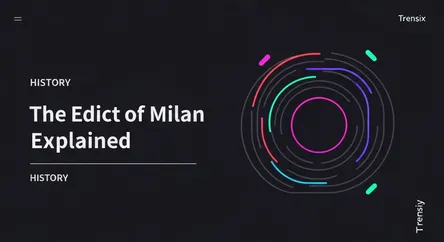History
The Edict of Milan Explained

Discover the Edict of Milan of 313 AD, the landmark proclamation that ended Christian persecution and reshaped the Roman Empire forever.
What is it?
The Edict of Milan was a proclamation agreed upon in 313 AD by Roman emperors Constantine I and Licinius. It permanently established religious toleration for Christianity within the Roman Empire, ending centuries of persecution. The edict granted all persons the freedom to worship the deity of their choice and specifically ordered that all confiscated property, such as churches and lands, be returned to Christian communities without delay. While it did not make Christianity the state religion, it gave the faith legal status and recognition.
Why is it trending?
The Edict of Milan is a pivotal moment in Western history. It represents a fundamental shift in the religious landscape of the Roman Empire, moving Christianity from an outlawed cult to a legally protected religion. This legal recognition was a turning point that allowed Christianity to spread rapidly and openly. The edict is crucial for understanding the eventual rise of Christianity as the dominant religion in Europe. It laid the foundation for the concept of religious freedom and marked the beginning of a new relationship between church and state.
How does it affect people?
For people in the Roman Empire, the edict's impact was profound. Christians were freed from the constant threat of violence and execution, allowing them to practice their faith openly. This newfound security led to the growth of the Church as an institution, with the construction of public places of worship. For the empire as a whole, it was a political move intended to promote civic harmony and stability by ending internal religious strife. In the long term, it paved the way for Christianity to become deeply integrated into the political and cultural fabric of Europe.